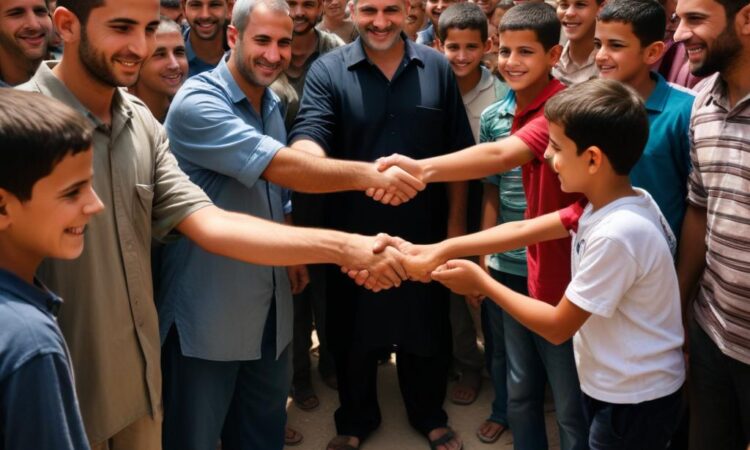What We Know About the Gaza Agreement: A Ceasefire Deal
Okay, so things have been pretty crazy in Gaza lately, right? Israel and Hamas have been going back and forth, and finally, a ceasefire has been agreed upon. But what does that actually *mean*? Let’s break it down in a way that’s hopefully easy to understand.
First off, it’s important to remember that these things are rarely simple. There are lots of moving parts, different factions involved, and the details are often shrouded in a bit of mystery (and let’s be honest, sometimes deliberate obfuscation).
What we *think* we know so far:
The main thing is a ceasefire – both sides have agreed to stop fighting. This is a huge deal, obviously, because it means a halt to the immediate violence. But a ceasefire isn’t the same thing as a peace treaty. It’s more like a pause in the fighting, a chance to take a breath and maybe figure out a path forward.
Reports suggest that the agreement includes things like humanitarian aid getting into Gaza. That’s vital, because the fighting has caused massive destruction and a lot of people are in desperate need of food, water, medicine, and shelter. Getting these essentials in is a key part of stabilizing the situation.
There’s also likely some kind of understanding – or maybe it’s more of a tacit agreement – about the flow of people and goods. Gaza’s borders have been incredibly restricted for a long time, and improving movement of people and supplies could be a big step towards long-term stability.
However, the devil’s in the details (as always). We haven’t seen a detailed, officially-released document outlining all the terms of the agreement. The information we’re getting is coming from various news sources and official statements, and these can be interpreted differently.
One thing to keep in mind is that ceasefires are often fragile. They can break down quickly if either side feels the agreement isn’t being honored or if underlying tensions aren’t addressed. So, while this is a positive step, it’s far from a guaranteed end to the conflict.
What we *don’t* know:
A lot, actually. The exact conditions of the ceasefire, beyond the general idea of a halt to fighting and humanitarian access, are still unclear. We don’t know the duration of the ceasefire – is it a temporary truce, or something more long-term? There are likely provisions regarding the release of prisoners or other contentious issues that haven’t been publicly revealed.
It’s also unclear what kind of monitoring mechanisms are in place to ensure the ceasefire is respected. Will there be international observers? How will violations be handled? These are crucial questions that remain unanswered.
The longer-term implications are also uncertain. This ceasefire might offer a window for negotiations, but the underlying causes of the conflict haven’t been resolved. Addressing those – issues like the blockade of Gaza, the disputes over land and resources, and the broader political context – will be essential if lasting peace is ever to be achieved.
Looking Ahead:
This ceasefire is undoubtedly a significant development. It provides much-needed respite from the violence and an opportunity for humanitarian aid to reach those who need it most. However, it’s critical to understand that this is just one step in a long and complex process. The path towards a lasting resolution is still fraught with challenges, and sustained international engagement will be crucial in ensuring that this ceasefire holds and paving the way for a more just and peaceful future.
The situation remains fluid, and new information is likely to emerge in the coming days and weeks. It’s important to stay informed through reputable news sources and avoid spreading misinformation. The situation is complex and deserves careful consideration.
It’s a very delicate situation and we should all hope for a peaceful resolution.

